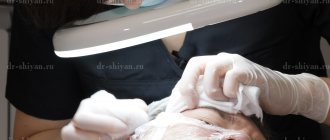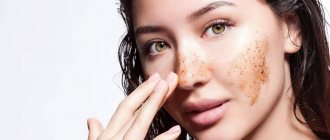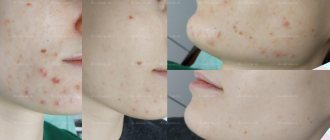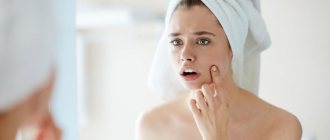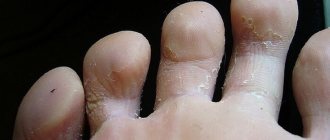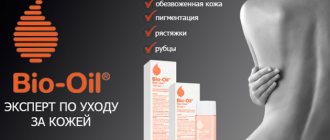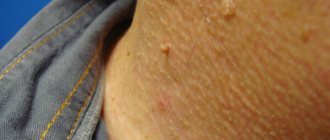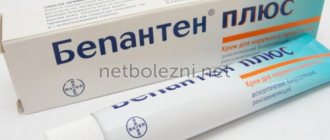Can a teenager outgrow acne?
Modern ideas about acne have changed radically. Thus, the previously prevailing approach that “acne can be left untreated”, “the child must outgrow it”, is categorically unacceptable. Acne is a chronic disease that is accompanied by periodic exacerbations and increasing severity of clinical manifestations, which leads to the formation of scars, age spots and other manifestations of post-acne. Considering the special psycho-emotional background of adolescents, the presence of acne and scars on the face causes them psychological discomfort and reduces their social activity.
Causes and symptoms of acne at different ages
According to official data, there are no clear differences between the course of acne in adults and adolescents, but the clinical picture indicates a number of pathogenic factors that are typical for women92:
- genetic factors;
- stress;
- influence of ultraviolet radiation;
- obesity;
- increased level of atherogenic lipoproteins in the blood;
- poor nutrition.
There may be other reasons for the appearance of acne in adolescents and adults:
- endocrine disorders;
- gynecological diseases;
- gastrointestinal diseases that provoke dysbacteriosis;
- use of cosmetics with comedogenic components;
- taking certain medications, such as corticosteroids.
To understand the causes of acne, you need to consult a specialist.
Is it possible to prevent the occurrence of the disease?
It is impossible to prevent the occurrence of the disease, but it is possible to provide prevention or improve its course. For each degree of acne, the LIBREDERM laboratory has developed an algorithm for maintenance therapy with Seracin, which includes from one to three stages:
- Cleans without drying.
- Basic care and regulation of the sebaceous glands.
- Additional care – correction of local imperfections and evening out skin tone.
To prevent the development of the disease, teach your child from 11-12 years of age to wash his face 2 times a day using Seracin cleansing gel.
The gel is designed taking into account the cleansing needs of oily skin and acne-prone skin. It contains antibacterial and anti-inflammatory components of plant origin, as well as an effective cleansing complex represented by modern and safe surfactants. Washing with Seratsin gel removes excess sebum and frees the skin from keratinized epithelium, due to which the pores are cleared of sebaceous plugs, and metabolic processes in the skin are normalized.
Cause of teenage acne
Features of adolescence
Adolescence (12-16 years) is a rather complex period of our lives from a physiological point of view. In a very short time, we experience many serious changes that affect the quality of our future lives:
- adolescence is a time of rapid, spasmodic growth of the skeletal system (5-7 centimeters per year), while the bones grow unevenly (tubular bones grow faster), which causes disproportionality and sometimes impaired coordination of movements;
- the muscle corset changes in record time;
- the work of such a part of the brain as the pituitary gland, which is responsible for metabolism and human reproductive function, changes;
- the work of the sex glands is activated, sex hormones are as active as possible;
- The activity of the thyroid gland becomes much more active.
Some experts believe that a teenager at this age experiences physiological changes similar to those during pregnancy, only somewhat extended in time. Such a shake-up of the body rarely occurs without any side effects. Among the most common are the following:
- headache;
- weight instability;
- jumps in blood pressure for no apparent reason;
- problems with sleep and concentration;
- hormonal disorders.
Photo source: shutterstock.com
Causes of teenage acne
Doctors say the main reason for the appearance of rashes that make life so difficult for teenagers is hormonal changes that are characteristic of this age (up to 85% of teenagers aged 13 to 16 years complain of the appearance of acne).
The changes occurring in the body in boys provoke an increased production of androgens (sex hormones), which affect the sebaceous glands, causing them to more actively produce sebum, which leads to clogging of the pores and their inflammation. All this causes the appearance of unpleasant and difficult to treat rashes.
Girls may also experience teenage acne, which is caused by hormonal imbalance. The only reason can be called an increase in progesterone levels in the blood.
However, hormonal imbalance is not the only cause of teenage acne. There are several contributing factors, including:
- “unhealthy” diets containing high amounts of cholesterol;
- gastrointestinal diseases (gastritis, gastric ulcer, colitis, etc.);
- stressful conditions that can stimulate the adrenal glands, the hormones of which can negatively affect the appearance and condition of the skin;
- hereditary predisposition can also be the cause of teenage rashes;
- Failure to comply with hygiene rules quickly and negatively affects the skin. Moreover, in this case we are talking not only about a lack of hygiene, but also about an excess of hygiene procedures that dry the skin and make it much more vulnerable;
- Incorrectly selected cosmetic products for the care of teenage skin (cream, lotion, mask) can be a “trigger” for the appearance of a rash.
Regardless of the cause and type of teenage rashes, you shouldn’t fight them on your own. Be sure to see a doctor, who will determine what type of rash it is and, if necessary, prescribe additional tests, studies or consultations with related specialists. There is no universal pill to treat all types of teenage acne. Each variety uses its own product.
My child does not have inflammation, but there are “black spots” and an oily sheen on the skin. Does it need to be treated?
If there is a clear tendency to acne and the formation of comedones - “blackheads” and white non-inflammatory nodules, which are often localized on the skin of the forehead and nose, a more active effect is recommended. It is strictly unacceptable to take a wait-and-see approach, otherwise soon the “nodules” and “dots” will turn into red inflammatory elements, and then into purulent ones. In this case, we recommend that teenagers wash themselves with Seracin cleansing gel and wipe the skin with Seracin lotion twice a day. After each cleansing, Seracin mattifying cream should be applied to the skin. Lotion for deep cleansing of pores helps reduce the number of open comedones - AHA acids in its composition gently exfoliate the cells of the stratum corneum of the skin, and Sulfur in a bioavailable form regulates the activity of the sebaceous glands. Mattifying cream Seracin has anti-inflammatory, bactericidal activity and in a short time is able to normalize the functioning of the sebaceous glands and restore metabolism in the skin. It is worth paying attention to the cosmetic mattifying effect of this cream - it significantly reduces the appearance of oily skin.
POWER OVER YOUNG ORGANISM
It’s especially scary when computer addiction occurs in teenagers (most often it’s a gaming addiction). After all, firstly, they do not notice the presence of a problem, and secondly, they gradually lose the ability to behave adequately in real life: computer addiction in adolescents leads to the fact that in reality they continue to think in the same virtual game categories.
And there are many lives, the possibility of a reboot, there is no physical pain, you can always buy yourself health or the necessary elixir; success or the transition to a new level - and, accordingly, the degree of one’s own coolness - depend on how quickly and skillfully he deals with a certain number of enemies or overcomes a certain number of obstacles. The concept of death is replaced by other concepts (end of the game, rollback to the beginning of the round, loss of one attempt out of many).
Parents should notice that something is wrong, because the main help will initially come from them. Dependence does not form at lightning speed. Therefore, by carefully observing your child, analyzing the intra-family situation, the behavior of your daughter or son, you can stop the process in time before it reaches the stage of a mental disorder and the teenager requires treatment for computer addiction from a psychiatrist.
Never throw it in your child’s face that he is abnormal and that he needs to see a psychiatrist. The last thing a teenager would want in this life is to feel like a psycho.
My child has skin inflammations. What to do?
If inflammatory elements have already arisen, and if there are few of them, then in addition to the remedies listed above, it is possible to use Seracin active cream with anti-inflammatory ingredients. The optimally selected composition of the product allows you to eliminate visible elements of acne in a few days. Girls can also use Seracin CC cream. It helps relieve inflammation and disguise imperfections. It is important to note the ability of this product to control the secretion of sebum at the cellular level, while the natural moisturizing components in the Seracin CC cream restore the skin’s hydrobalance, disturbed due to dermatological treatment.
If the disease has taken an uncontrolled course, immediately contact a dermatologist who will assess the clinical stage of the disease, prescribe additional examination and timely treatment using external and, possibly, systemic medications.
Clinical signs of acne in adulthood and adolescence
Late acne is more common among women. Thus, experts studied 1013 patients with acne, in whom it first appeared after 20 years. The average age of respondents was 48 years. Among the subjects there were 540 women and 473 men.92
Researchers say acne during adolescence affects girls and boys equally often. In the group of adult patients, women predominate, and the most common type of rash is nodular elements, which are located on the lower third of the face - branches of the lower jaw, chin, perioral zone, neck. However, papules and pustules may not be observed in adult patients.92
The pathological process in adult patients is stable; women often experience relapses and exacerbations of acne, which lead to the formation of post-inflammatory hyperpigmentation and scars. The ratio of inflammatory and non-inflammatory elements in adults is higher than in adolescent patients. 92
In adolescents, acne occurs during puberty, the disease manifests itself in the form of many open and closed comedones in the T-zone (cheeks, chin, nose, forehead), inflammatory elements, and hyperproduction of sebum. Acne in adolescence quite often resolves on its own when hormonal levels normalize. In this case, post-acne lesions may not form. 92
